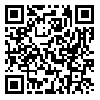Volume 68, Issue 8 (November 2010)
Tehran Univ Med J 2010, 68(8): 451-458 |
Back to browse issues page
Download citation:
BibTeX | RIS | EndNote | Medlars | ProCite | Reference Manager | RefWorks
Send citation to:



BibTeX | RIS | EndNote | Medlars | ProCite | Reference Manager | RefWorks
Send citation to:
Noorbakhsh S, Farhadi M, Ebrahimi Taj F, Hojaji Z, Tabatabaei A. Serum pneumolysin antibody and urinary pneumococcal antigens (Binax) level in children with upper respiratory tract infection versus normal controls. Tehran Univ Med J 2010; 68 (8) :451-458
URL: http://tumj.tums.ac.ir/article-1-5650-en.html
URL: http://tumj.tums.ac.ir/article-1-5650-en.html
Samileh Noorbakhsh * 
 1, Mohammad Farhadi2
1, Mohammad Farhadi2 
 , Farideh Ebrahimi Taj3
, Farideh Ebrahimi Taj3 
 , Zahra Hojaji3
, Zahra Hojaji3 
 , Azardokht Tabatabaei4
, Azardokht Tabatabaei4 


 1, Mohammad Farhadi2
1, Mohammad Farhadi2 
 , Farideh Ebrahimi Taj3
, Farideh Ebrahimi Taj3 
 , Zahra Hojaji3
, Zahra Hojaji3 
 , Azardokht Tabatabaei4
, Azardokht Tabatabaei4 

1- Department of Pediatric Infectious Disease, Research Center of Pediatric Infectious Diseases, Iran University of Medical Sciences, Tehran, Iran. , Samileh_noorbakhsh@yahoo.com
2- Department of ENT, Head and Neck & Surgery Research Center, Iran University of Medical Sciences, Tehran, Iran.
3- Department of Pediatric, Iran University of Medical Sciences, Tehran, Iran.
4- Department of Microbiology, Research Center of Pediatric Infectious Diseases, Iran University of Medical Sciences, Tehran, Iran.
2- Department of ENT, Head and Neck & Surgery Research Center, Iran University of Medical Sciences, Tehran, Iran.
3- Department of Pediatric, Iran University of Medical Sciences, Tehran, Iran.
4- Department of Microbiology, Research Center of Pediatric Infectious Diseases, Iran University of Medical Sciences, Tehran, Iran.
Abstract: (6354 Views)
Background: Streptococcus pneumoniae is a common cause of respiratory infection. Pneumococcal upper respiratory tract infection (URTI) in children is seldom bacteremic. Determination the prevalence of S.pneumoniae infections in children with URTI using rapid urinary antigen test (BINAX now) and titration of serum pneumolysin antibody (added to conventional culture) was the object of this study.
Methods: A cross sectional, case-control study done in ENT & pediatric departments of Rasoul Hospital in Tehran, Iran, (2008 -2010) upon 133 cases with upper respiratory tract infection (otitis media, sinusitis and tracheitis). The nosocomial infection omitted in first step. 60 remaining cases followed for S.pneumoniae infection by culture and rapid urinary antigen test (Binax Now). Serum pneumolysin antibody titers compared between 45 cases and 66 controls.
Results: Positive culture (S.pneumoniae, H.influenza) obtained in 4/60 URTI cases. Positive urinary S.pneumoniae antigen detected in 50% (30/60) of cases and 6% (4/66) of controls (p=0.01). The pneumolysin antibody level with cut-off level 525pg/ml was higher in URTI cases than controls (982±441 Vs. 525±42, p<0.0001). Area under the ROC curve for pneumolysin antibody was 0.923 (95%CI 0.86-0.97, p<0.0001) and had 87% sensitivity and 82% specificity for differentiation between cases and controls.
Conclusions: The high pneumolysin antibody level in cases with URTI strongly indicates the pneumococcal infection. Pneumolysin antibody level even in little amounts (525pg/ml) with 87% sensitivity and 82% specificity is a suitable test for diagnosis of pneumococcal infection in children with URTI, but this test should be added to conventional culture (gold standard) and rapid urinary antigen test.
Methods: A cross sectional, case-control study done in ENT & pediatric departments of Rasoul Hospital in Tehran, Iran, (2008 -2010) upon 133 cases with upper respiratory tract infection (otitis media, sinusitis and tracheitis). The nosocomial infection omitted in first step. 60 remaining cases followed for S.pneumoniae infection by culture and rapid urinary antigen test (Binax Now). Serum pneumolysin antibody titers compared between 45 cases and 66 controls.
Results: Positive culture (S.pneumoniae, H.influenza) obtained in 4/60 URTI cases. Positive urinary S.pneumoniae antigen detected in 50% (30/60) of cases and 6% (4/66) of controls (p=0.01). The pneumolysin antibody level with cut-off level 525pg/ml was higher in URTI cases than controls (982±441 Vs. 525±42, p<0.0001). Area under the ROC curve for pneumolysin antibody was 0.923 (95%CI 0.86-0.97, p<0.0001) and had 87% sensitivity and 82% specificity for differentiation between cases and controls.
Conclusions: The high pneumolysin antibody level in cases with URTI strongly indicates the pneumococcal infection. Pneumolysin antibody level even in little amounts (525pg/ml) with 87% sensitivity and 82% specificity is a suitable test for diagnosis of pneumococcal infection in children with URTI, but this test should be added to conventional culture (gold standard) and rapid urinary antigen test.
Keywords: Streptococcus pneumoniae, S. pneumonia urinary antigen test, BINAX, pneumolysin, Upper respiratory tract infection
Type of Study: Original Article |
Send email to the article author
| Rights and permissions | |
 |
This work is licensed under a Creative Commons Attribution-NonCommercial 4.0 International License. |



